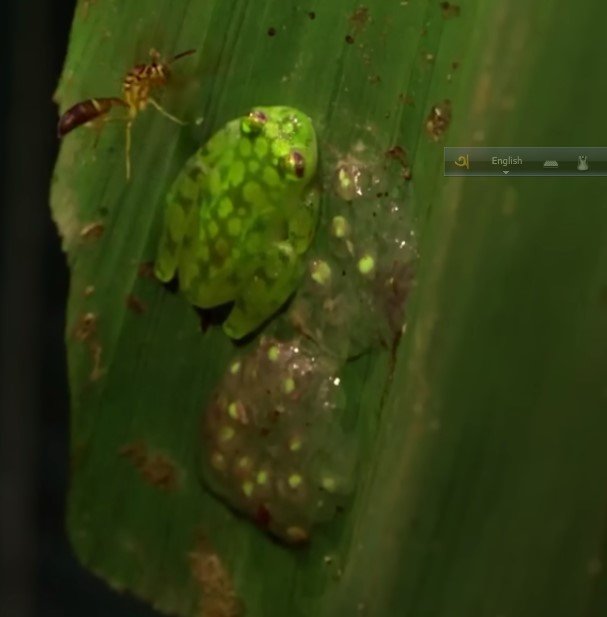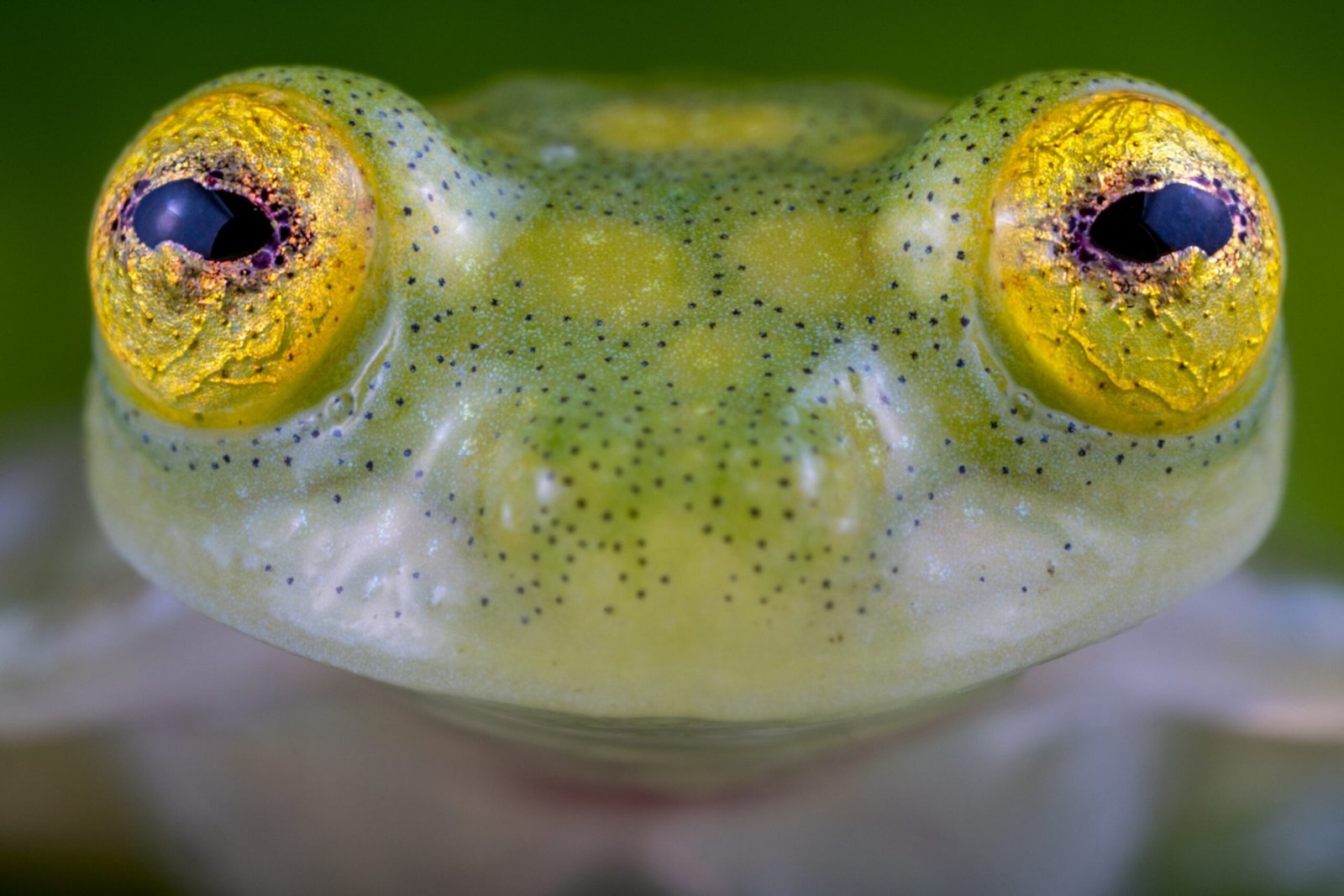The Glass Frog is a small, semi-transparent frog with its internal organs visible through its skin. This unique frog species is known for its distinctive appearance and habitat in the rainforests of Central and South America.
Glass Frogs are fascinating creatures that have become a subject of interest for researchers and nature enthusiasts alike. Their transparent skin allows for a rare glimpse into their anatomy, making them a true marvel of the animal kingdom. We will explore the characteristics, behavior, and conservation status of Glass Frogs, shedding light on their importance in the delicate ecosystem they inhabit.
Appearance
The glass frog stands out due to its transparent skin, revealing internal organs. This unique appearance allows for observation of its beating heart and digestive system, making it a fascinating subject for researchers and nature enthusiasts alike.
Coloration
Glass frogs, as their name suggests, have a remarkable appearance that sets them apart from other amphibians. One fascinating aspect of their appearance is their unique coloration.
Glass frogs come in a variety of vibrant hues, including green, yellow, and even translucent shades. The coloration of glass frogs serves an essential purpose – camouflage.
By blending in with their surroundings, these frogs can easily hide from predators. In dense rainforest environments, their green coloration helps them blend with leaves, while their translucent skin allows them to blend in with light passing through their habitat.
Body Structure

The body structure of glass frogs is truly captivating. These small creatures have a slender body that typically measures around 2-3 inches in length.
One notable feature of their body structure is their long, slender legs, which aid in their agility and jumping ability. These legs allow them to navigate through the dense vegetation of the rainforest with ease and make quick leaps when needed.
Glass frogs also have distinctive toe pads that help them cling to branches and leaves, enabling them to perch at various heights above the ground or near water bodies, where they often lay their eggs.
Transparency
One of the most intriguing aspects of glass frogs is their transparency. Unlike most other frogs, the skin on their back and belly is almost entirely translucent, revealing their internal organs.
This unique trait has earned them the name “glass frogs.” Their see-through skin allows researchers and enthusiasts to observe their inner workings, such as their heart, liver, and digestive system.
Not only is the transparency of glass frogs fascinating, but it also serves a distinct purpose. By making their inner organs visible, these frogs intimidate predators by appearing larger and more threatening.
The transparency of glass frogs truly showcases the wonders of nature and highlights the incredible adaptations that exist within the animal kingdom.
Habitat
Glass Frogs are unique amphibians known for their transparent bellies and vibrant green skin. Let’s explore their habitat requirements.
Geographical Range
Glass Frogs are primarily found in Central and South America, including countries such as Costa Rica, Panama, Ecuador, and Colombia.
Preferred Ecosystems
- Tropical Rainforests: Glass frogs thrive in the lush canopies and humid environment of tropical rainforests.
- Streams and Rivers: They prefer habitats near clear, flowing water bodies for breeding and laying eggs.
- Elevated Areas: These frogs are often found in elevated regions ranging from 500 to 1500 meters above sea level.
Behavior
Glass frogs are known for their fascinating behaviors that set them apart in the animal kingdom.
Call
Glass frogs communicate through unique calls to attract mates and establish territory.
Reproduction
The reproduction process of glass frogs is intriguing, involving intricate courtship rituals.
Parental Care
Glass frogs are exceptional in their parental care, with males often taking on the responsibility of guarding and tending to the eggs.
Diet
Glass Frogs have a fascinating diet that consists primarily of insects. This subheading will delve into their feeding habits and the specific types of prey they consume.
Feeding Habits
Glass Frogs are voracious predators, constantly searching for their next meal. They are primarily active at night, using their excellent vision to locate their prey. Their feeding habits can vary slightly depending on their habitat and the specific species of Glass Frog.
In general, Glass Frogs are opportunistic hunters, meaning they will eat whatever insects they come across. They have been known to feed on a wide range of small invertebrates, including beetles, ants, spiders, and even smaller frogs. Their diet is incredibly diverse.
Prey
One of the main sources of prey for Glass Frogs is ants, which provide an abundant and reliable food source. Ants are often found in high numbers in the canopy habitats where Glass Frogs reside. Their small size and sheer numbers make them an easy target for these agile predators.
Additionally, Glass Frogs also feed on various species of beetles. Beetles are often attracted to lights at night, which makes them vulnerable to predation by Glass Frogs. These frogs will patiently wait near light sources, ready to snatch any beetles that come their way.
Other common prey items include spiders, which are plentiful in their natural environments. Glass Frogs are capable of capturing these fast-moving arachnids with ease, using their agile tongues to quickly snatch them up.
Interestingly, Glass Frogs are also known to cannibalize smaller conspecifics, consuming other individuals of the same species. This behavior is most commonly observed during times of limited food availability, where competition for resources intensifies.
In conclusion, Glass Frogs have a varied and adaptable diet, allowing them to thrive in diverse ecosystems. Their feeding habits and ability to consume a wide range of prey make them successful hunters in their natural habitats.
Threats And Conservation
Glass frogs, known for their translucent skin and vibrant green color, face various threats in the wild. It’s crucial to be aware of these threats to ensure the conservation of their species. Understanding the factors that endanger glass frogs allows for targeted conservation efforts to protect these unique amphibians.
Habitat Loss
Habitat loss due to deforestation and urbanization poses a significant threat to glass frog populations. The destruction of their natural habitat disrupts their breeding and foraging grounds, leading to population declines.
Pollution
Water pollution from agricultural runoff, mining activities, and industrial waste can have detrimental effects on glass frogs. Contaminated water sources impact their ability to thrive and reproduce, further endangering their survival.
Illegal Pet Trade
The illegal pet trade poses a threat to glass frogs as they are often sought after for the exotic pet market. Unregulated capturing and trading of these amphibians disrupts their populations in the wild and can lead to their decline.
Conservation Efforts
Efforts to conserve glass frog populations involve establishing protected areas, implementing conservation programs and raising awareness about their importance in ecosystems. By addressing these threats and implementing protective measures, conservationists aim to safeguard the future of glass frogs.
Frequently Asked Questions For Glass Frog
What Is Unique About The Glass Frog?
The Glass Frog’s translucent skin allows observers to see its internal organs, making it a fascinating creature to study.
Where Can Glass Frogs Be Found?
Glass Frogs are mostly found in the rainforests of Central and South America, including countries like Costa Rica and Ecuador.
What Do Glass Frogs Eat?
Glass Frogs primarily feed on insects like ants, beetles, and crickets, making them an important part of the rainforest ecosystem.
Why Are Glass Frogs Endangered?
The main threats to Glass Frogs are habitat loss due to deforestation, pollution, and climate change, which have led to a decline in their population.
Conclusion
The glass frog is a fascinating creature found in the rainforests of Central and South America. Its transparent skin reveals its inner organs, making it a unique and captivating species. As an important indicator of environmental health, the glass frog reminds us of the importance of preserving these fragile ecosystems.
By raising awareness and supporting conservation efforts, we can ensure the survival of this remarkable and delicate species for future generations to admire and learn from.
